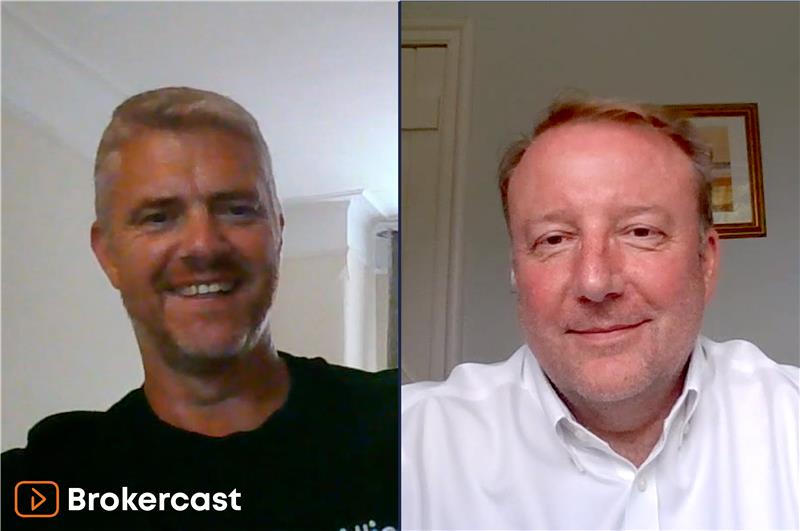In our new episode of Brokercast, Allica Bank’s senior asset finance underwriter, Jonathan Dent, talks to Allica Bank's senior business development manager Craig Edwards about the transport sector.
They cover some of the key issues brokers should consider when working with asset finance clients, the latest transport sector trends, and what brokers can do to help make a killer (and speedy) asset finance proposal.
If you’ve ever wondered what an underwriter looks for when a transport deal lands on their desk, this interview will be an eye-opener.
What underwriters look for in every deal
Before Craig could get into his questions, Jonathan wanted to set some context about underwriting. The top-level view of what he looks for in any new deal can be broken down into two key areas:
- red flags
- credit assessment and risk profiling
No matter the sector or scale, “the knowledge the broker has about the client and where they’ve got the deal from is critical.”
How the cost of living crisis is affecting the transport sector
The first topic Craig wanted to go through was the cost of living crisis, affecting everything from fuel to food. “Is there anything brokers should be keeping in mind when making an application for transport clients?”
Jonathan highlighted three key areas to consider:
1) Demand has tempered the impact on haulage, but it’s not a failsafe
With unprecedented demand for their services, hauliers have been relatively comfortable in passing on rising fuel costs. Despite this, Jonathan explained, they are “not immune to interest rate rises,” which look set to continue increasing. Clients whose working capital is provided by a variable rate facility (e.g. an overdraft) now carry greater risk.
Brokers can help by providing some commentary detail about how they’re dealing with the situation – whether through commercial remortgaging, reducing drawdown, calling in debts, or similar. A little context upfront can go a long way to mitigating the perceived risk for the underwriter.
2) Interest is back “with a vengeance”
Interest rates have been “so low for so long, it wasn’t really a metric that was that important, but it’s back on the table now with a vengeance.” Jonathan isn’t being dramatic – we’ve seen some marked BoE rate rises in 2022, with further rises not out of the question.
His advice to brokers is to get granular with their proposals. “Go into a bit of detail about who they work for.” Food haulage, as an example, “will be seen very positively,” whereas distribution for new cars offers less reassurance. It’ll also help to provide clarity about any debted dependency.
“Paint a picture for us,” Jonathan summarises.
3) Government loans are a modern phenomenon on balance sheets
Pointing to various schemes, such as CBILS, recovery loans, and bounce back loans, Jonathan explains that “we’ve had a massive flood of liquidity in the market, and they’re all having to be repaid now.”
These loans are largely under favourable terms, but they are “slowly going to leech businesses’ working capital away over time.”
Craig asked how brokers might handle these unique loans when having discussions with underwriters. “Be aware there’s a danger that liquidity can dry up and we’re looking at long-term funding,” he explained. “But a little bit of clarity about what government-backed debt the client has got will be a great help.” It’s not a red flag, by any means.
Extreme market conditions are being driven by constrained supply
Sticking to the theme of modern phenomena, Craig wanted to dive into an underwriter’s perspective on the challenges presented by limited vehicle supply.
“I don’t think I’ve ever experienced it before in 30 years of doing this job,” Jonathan admitted. Prices are so high because dealers know that waiting lists for new vehicles are stretching beyond 24 months. Jonathan is steadfast in his – and Allica’s – commitment to supporting SMEs, though. “Where the credit covenant is strong, we’re there to lend and help support SMEs.”
He did offer one word of caution. “Where the credit covenant isn’t perhaps as strong, that perceived possible £30,000 overpayment at the front end is going to have an effect on our recovery rate given default… and it might just push the decision into decline.”
The conditions right now are unique, but every transport client is working in the same market. “One of the things brokers can do to help us is to give us a full spec of the vehicle – not just ‘it’s a 19-plate DAF’”, Jonathan chuckled. The more information the underwriter has upfront, the more informed and confident they will be in their decision-making.
How brokers can make a killer application for transport sector clients
Craig asked Jonathan to share three key tips for writing an underwriter’s dream application. He came back with four ideas… admittedly, the first tip was that brokers should always come to Allica. After getting his well-earned pat on the back, Jonathan turned to the slightly more serious advice:
1) Check the ultimate beneficial owner
Go through the company’s ownership structure and determine who the ultimate beneficial owner is. If they are not listed as a director (or directors), “that is very rarely without some reason behind it and, quite often, the reason isn’t a good one.”
“If there are changes in directors, just ask yourself: is this normal?” Common changes might be an ageing director stepping back to let their child take over. If it’s a totally out-of-the-blue, seemingly unrelated appointment, it’s worth digging deeper.
2) Be alert to licensing changes
Jonathan is clear that “the UK road haulage industry is one of, if not the most, heavily regulated in the world.”
The granting and constant reviewing of operating licences is a bureaucratic behemoth for the Vehicle Operator Services Agency (VOSA). Without the correct licence, deals will hit a dead-end. VOSA’s search function will tell you if someone’s got a valid operator’s licence and you can also see their history (e.g. previous revocations).
3) Seek clarity in the muddied waters of dividends
“A lot of smaller hauliers pay themselves via dividends,” Jonathan explained, “paying themselves a nominal wage and taking the rest via dividends.”
This approach is well-established, legal, and tax efficient, but “it’s overstating the business’s profits to a degree.” Jonathan recommends exploring the payment structures of the business – “how discretionary are those dividends?” The directors might need them to live on or they might be semi-retired and mortgage-free, enjoying the opportunity of a few holidays each year. Greater clarity around payments will always be beneficial.
Come with context, paint a picture, and dive into details
As they were wrapping up, Craig noticed a theme that had emerged throughout the conversation – “the more information, the better.”
Jonathan wholeheartedly agreed, returning to his point regarding government loans and supply issues. A lot of the market conditions right now are unparalleled and unique to current national and international circumstances.
There’s no playbook for clients, brokers, or underwriters to follow – many of us are working on a deal-by-deal basis right now. The more information you can share up front, the better positioned we’ll be to work quickly and efficiently to process your application.





